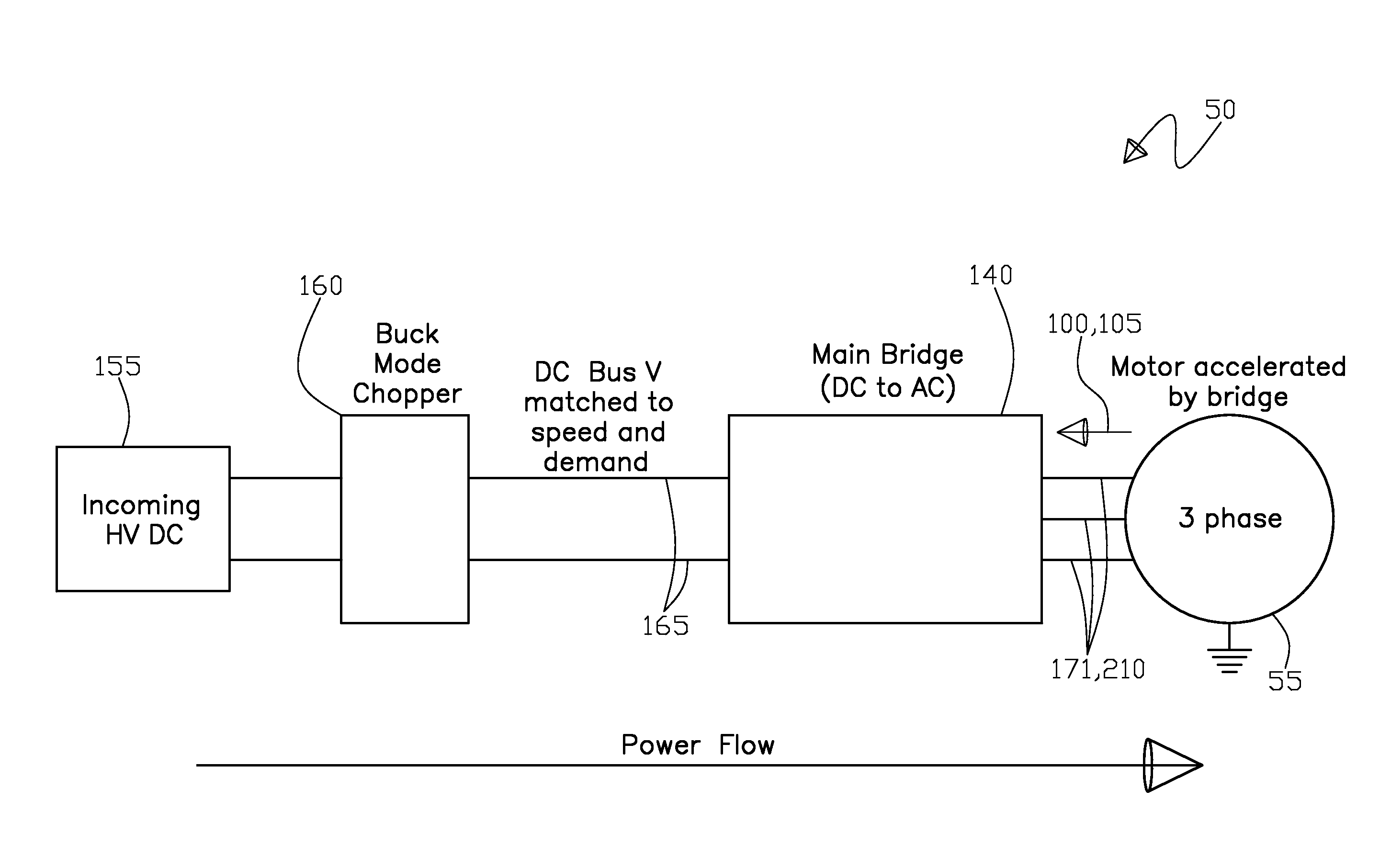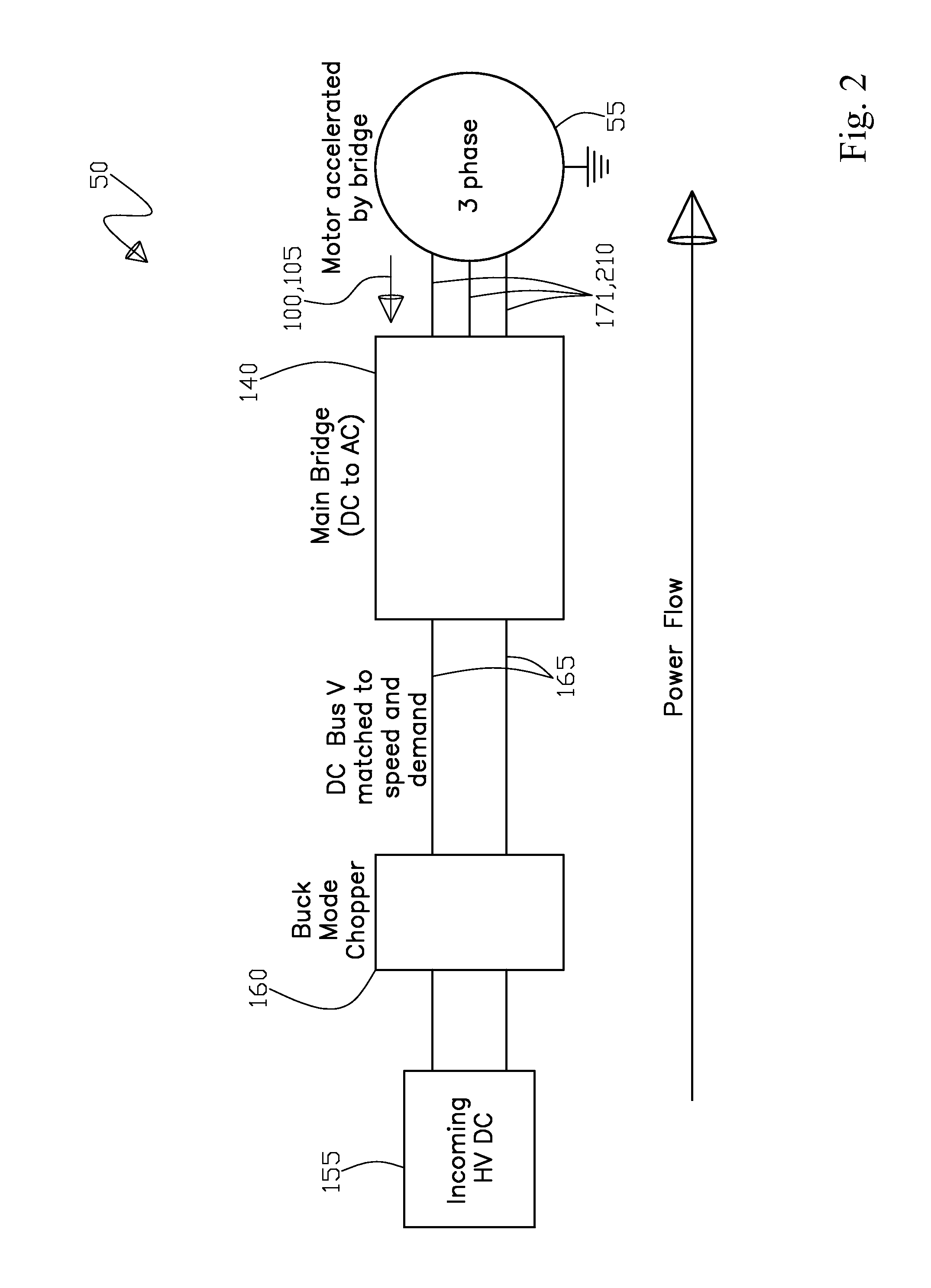Electrical Control System
- Summary
- Abstract
- Description
- Claims
- Application Information
AI Technical Summary
Benefits of technology
Problems solved by technology
Method used
Image
Examples
embodiment 52
[0120]Further, FIG. 15 shows a schematic block diagram of the second alternative embodiment 52 for the present invention electrical control system that includes a higher voltage direct current supply system power input 155. Continuing, FIG. 15 shows a direct current to direct current converter regulator circuit 160, a controlled voltage direct current inverter circuit power feed 165, the inverter circuit assembly 140, a lower pulse width modulation smoothed three phase alternating current 171, for a smoothed lower harmonic wave form 210 (not shown), and the high speed permanent magnet motor 55 with a signal 101 generated from the auxiliary stator wire loop 106 (not shown) disposed within the stator wire windings 126 (not shown).
embodiment 53
[0121]Next, FIG. 16 shows a schematic block diagram of a third alternative embodiment 53 of the present invention electrical control system that includes a lower voltage direct current supply system power input 155. Also, FIG. 16 shows a direct current to direct current converter regulator circuit 160, a controlled voltage direct current inverter circuit power feed 165, the inverter circuit assembly 140, a lower pulse width modulation smoothed three phase alternating current 171 for a smoothed lower harmonic wave form 210 (not shown), and the high speed permanent magnet motor 55 with a signal 101 generated from the auxiliary stator wire loop 106 (not shown) disposed within the stator wire windings 126 (not shown).
[0122]Continuing, FIG. 17 shows an expanded schematic view of FIG. 15, of the second alternative embodiment 52 for the present invention electrical control system that includes a higher voltage direct current supply system power input 155. Further, FIG. 17 shows a direct cu...
PUM
 Login to View More
Login to View More Abstract
Description
Claims
Application Information
 Login to View More
Login to View More - R&D
- Intellectual Property
- Life Sciences
- Materials
- Tech Scout
- Unparalleled Data Quality
- Higher Quality Content
- 60% Fewer Hallucinations
Browse by: Latest US Patents, China's latest patents, Technical Efficacy Thesaurus, Application Domain, Technology Topic, Popular Technical Reports.
© 2025 PatSnap. All rights reserved.Legal|Privacy policy|Modern Slavery Act Transparency Statement|Sitemap|About US| Contact US: help@patsnap.com



